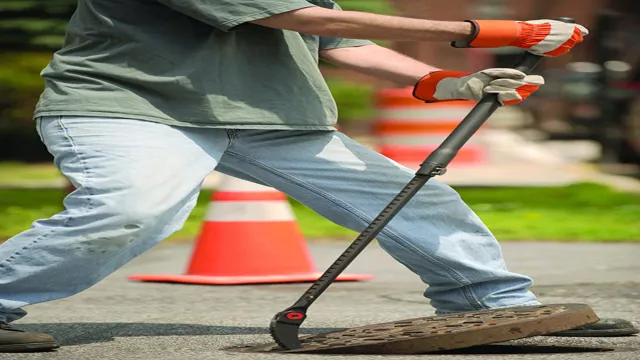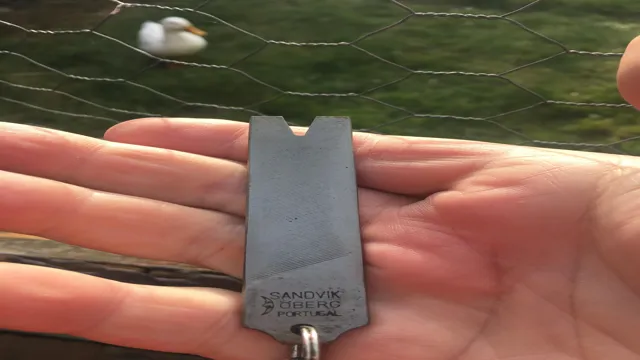What Size Pry Bar Do I Need for Home DIY Projects: The Ultimate Guide
Have you ever found yourself in the middle of a home project, struggling with the wrong size of pry bar? Don’t worry, you’re not alone. Choosing the right size of pry bar can make all the difference in your DIY endeavors. But with so many options on the market, how do you know which one to choose? It’s like picking the right paintbrush for a specific job – you want to ensure it’s the right fit for the task at hand.
In this blog post, we’ll explore the different sizes of pry bars and their uses, so you can make the right choice for your next project. Whether you’re tearing down drywall or removing nails, let’s get you equipped with the right tool for the job.
Consider the Task at Hand
If you’re wondering what size pry bar do i need, it all comes down to the task at hand. You need to consider the size of the object you’re trying to move, the amount of leverage you need, and the space you’re working in. Generally, the longer the pry bar, the more leverage you’ll have, but keep in mind that a longer pry bar may not fit in tight spaces.
Conversely, a shorter pry bar may be more maneuverable but won’t have as much leverage. For heavy-duty tasks, such as removing large nails or prying open wooden crates, a pry bar that is between 18 and 24 inches is ideal. A pry bar between 12 and 18 inches works well for lighter tasks or when working in tighter spaces.
Ultimately, the size of the pry bar you need depends on the job at hand, so it’s always a good idea to have a few different sizes on hand to tackle any task that comes your way.
Types of Pry Bars
When it comes to pry bars, there are various types available for different tasks. You need to consider the job at hand and select the right pry bar to get the job done efficiently. One type is a flat pry bar, which is an excellent all-around tool that can be used for multiple purposes, from prying open crates to removing nails.
Another type is a rolling head pry bar that is perfect for removing nails, splitting wood, and prying open objects with ease. Furthermore, a claw bar or nail puller is perfect for tasks that require removing nails, staples, or other fasteners. It’s important to choose the right pry bar for each job to make the task easier and more effective.
Remember, using the wrong pry bar can lead to damage to the tool or injury to the person doing the job. So, always consider the task at hand and select the right pry bar for the job.
Length and Weight
When it comes to choosing the right length and weight for a task, it’s important to consider the specific requirements. For example, a heavier weight may be necessary for heavy-duty tasks, such as construction, while a lighter weight may be more practical for tasks that require more finesse, such as crafting. Similarly, the length of a tool or material can make a big difference in its effectiveness.
A longer tool may provide more reach, but may also be more cumbersome to handle. On the other hand, a shorter tool may be more maneuverable but may not provide the same level of functionality. Ultimately, it’s important to assess the demands of the job at hand and choose the appropriate length and weight to ensure optimal performance.
By doing so, you can improve efficiency, productivity, and safety while achieving the best results possible.
Measuring for the Correct Size
When it comes to selecting the correct pry bar size, measuring accurately is crucial. The last thing you want is to purchase a pry bar that’s too small or too big for the job at hand. To find the right size pry bar, you need to measure the space where you’ll be using it.
You can use a tape measure or ruler to get the right dimensions, then compare those measurements with the pry bar’s dimensions to ensure a good fit. When considering what size pry bar do I need, keep in mind that you also want to select one with an appropriate weight for the task. A lighter pry bar may be easier to use but may not provide enough leverage for heavier jobs, while a heavier pry bar may be too unwieldy for delicate tasks.
With proper measurements and consideration for weight, you can select the perfect pry bar size for your needs.
Determining the Required Length
When it comes to determining the required length of your product, whether it be a skirt, dress or pants, measuring for the correct size is essential. First, you need to identify the waist, hips and length measurements. Typically, the waist measurement should be taken at the smallest part of your waist, while the hip measurement should be taken at the widest part of your hips.
To measure the length, simply start from the top of your waist and measure down to where you want the garment to fall. It’s important to take accurate measurements to ensure that your product fits correctly and flatters your body shape. Don’t forget to consult the size chart as well to determine which size to order.
By measuring yourself correctly, you’ll have the perfect fit and be able to confidently rock your new outfit!
Accounting for Leverage
Accounting for leverage can make or break a business’s financial health. Leverage is the use of borrowed funds to amplify potential returns, but it can also amplify potential losses. To measure the correct size of leverage, a business must consider its debt-to-equity ratio, interest coverage ratio, and return on equity ratio.
The debt-to-equity ratio measures the amount of debt relative to equity, which can signal how risky a business is. The interest coverage ratio measures how easily a business can pay its interest expenses, which is important for creditors. Lastly, the return on equity ratio measures how effectively a business is using shareholder investments to generate profits.
By taking these ratios into account, a business can make informed decisions about the appropriate level of leverage to use without jeopardizing its financial stability. It’s like building a house on stilts. If the stilts are too tall or too weak, the house can collapse.
But if the stilts are just right, the house can stand tall and weather any storm.
Final Thoughts
When it comes to DIY projects that require prying, having the right size pry bar can make all the difference. So, what size pry bar do you need? The answer depends on the task at hand. For small projects such as removing nails or prying open a small container, a 6 or 8-inch pry bar will do the trick.
For larger projects such as removing floorboards or prying open a door, a 12 to 18-inch pry bar will provide the necessary leverage and power. It’s always better to have a pry bar that’s slightly larger than needed rather than one that’s too small. This will ensure that you have enough leverage to get the job done and prevent damage to your tools or the project itself.
By having the right size pry bar, you’ll be able to tackle any prying project with ease and efficiency.
Conclusion
In the search for the perfect pry bar size, one must consider their desired level of leverage and strength. Much like a knight must choose the right sword for battle, one must choose the right pry bar for the toughest of challenges. But fear not, for with the right size pry bar in hand, even the most stubborn of bolts and nails will have met their match.
So, go forth and pry with confidence, knowing that you have found the perfect tool for the job!”
FAQs
What size pry bar do I need for household repairs?
For typical household repairs, a 12-18 inch pry bar should suffice.
What size pry bar do I need for automotive repairs?
For automotive repairs, a longer pry bar (24-36 inches) may be needed to provide adequate leverage.
What material should I look for in a pry bar?
Pry bars made of heat-treated steel are usually the strongest and most durable.
Can a pry bar be used for demolition work?
Yes, pry bars are commonly used for demo work. However, a longer and heavier pry bar may be needed for tougher demolition projects.
Is it safe to use a pry bar to remove nails?
Yes, pry bars are a common tool used for removing nails. However, caution should be taken when using a pry bar to prevent damage to the surrounding material.
Can a pry bar be used to open doors?
Yes, pry bars can be used to force open doors. However, this should only be done in emergency situations and with caution to avoid damaging the door or the surrounding area.
Is it necessary to have multiple sizes of pry bars?
It is not necessary but having pry bars in different sizes can provide versatility for different tasks and make certain jobs easier.



